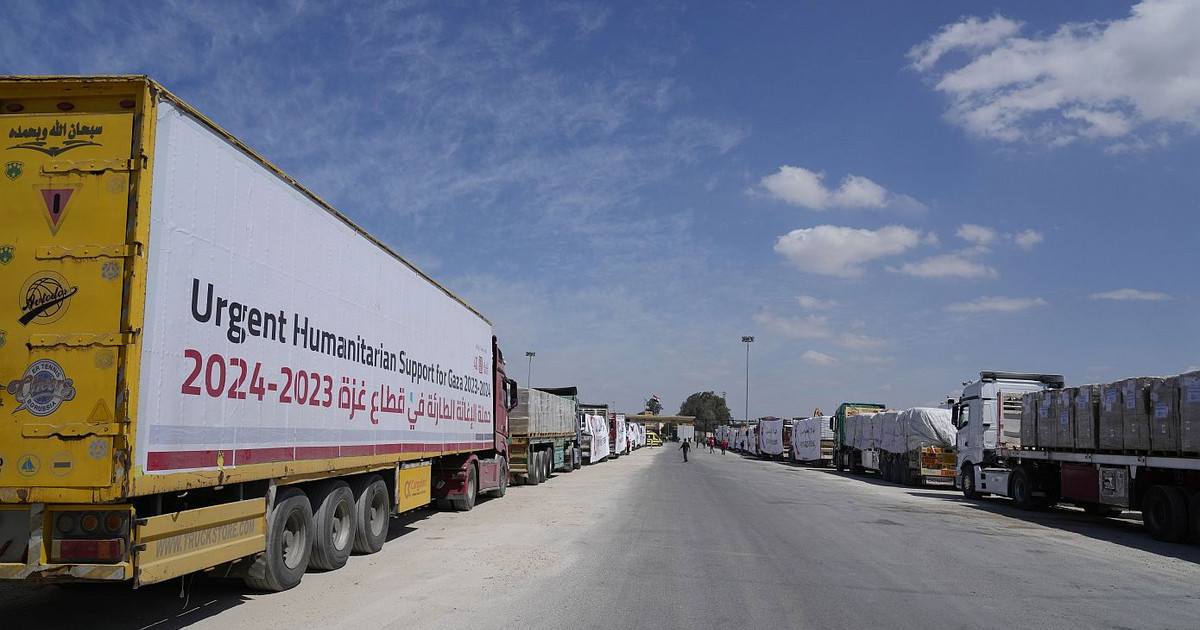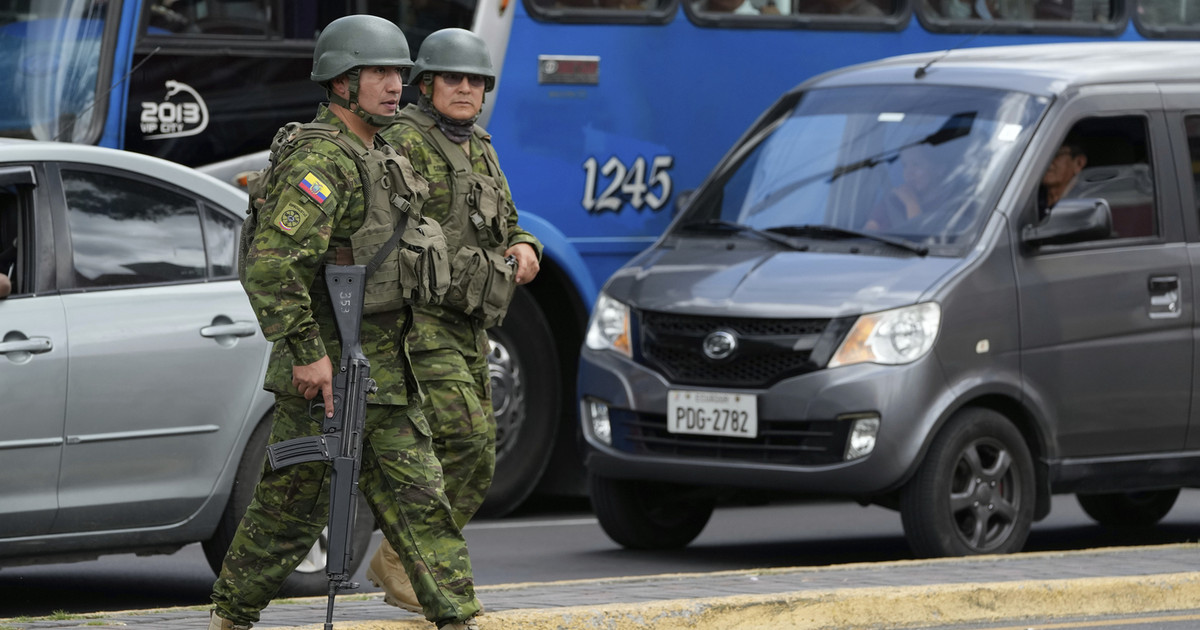This Tuesday (24) marks the three months of the Russian invasion of Ukraine. THE CNN spoke with specialists Carlos Mendes Dias, colonel of the Portuguese army, and researcher Diana Soller to take stock of what has happened so far, and what is the perspective for the future.
- Who is winning the war?
“It depends on the perspective,” the researcher who specializes in international relations began. “After all, Russia’s advances on the ground are more significant than the blockade that Ukraine manages to make, and in that sense, Russia can be said to be winning the war,” she said. But on the other hand, we have the argument that Ukraine, which had no military presence, has been able to keep Russia from moving forward.” Recall that, before the invasion, Ukraine’s defense budget was ten times less than Russia’s.
“From a military point of view, Russia is winning. It has practically conquered the Luhansk region, the connection between Crimea and Donbass, and even the province of Donetsk is more than 60% conquered”, said Colonel Mendes Dias. “Ukraine is having great difficulties in Donbass,” he added, noting that “the loss of Mariupol and Azovstal has taken a toll on Ukrainian morale.” Still, “from a political point of view, Russia is isolated and has no gains”, he continued, stating that, in this dimension, “Ukraine is winning”.
- How many civilians have died?
The war has already killed 3,930 civilians – 1,482 men, 973 women, 90 girls and 98 boys, 69 children and 1,218 adults whose sex has not been identified. These are the latest figures from the United Nations High Commissioner for Human Rights, but the agency admits that the actual number of civilians killed is likely much higher than reported. Organizations struggle to gather information in regions where fighting is most intense, such as Mariupol in Donetsk, Izium in Kharkiv and Popsana in Luhansk.
As for the wounded, the war has claimed at least 4,532 casualties – 880 men, 588 women, 106 girls, 124 boys, 164 children and 2,670 adults whose sex has not been identified.
The UN said most civilians killed were victims of large-scale explosions, including heavy artillery shelling, missiles and air strikes.
Ukraine has not disclosed the number of soldiers killed over a strategic issue, but on Monday (23), President Volodymyr Zelensky said that between 50 and 100 Ukrainian soldiers die daily in the Donbass region, where fighting is intensifying. Mendes Dias considers that these statements suggest that Zelensky is making an appeal: “This is a cry saying ‘I need people’”, stressing that it is a “serious” number.
On the Russian side, the Kremlin has also not released the number of soldiers killed for several weeks, with the last official balance sheet being released at the end of March and, at the time, the regime of Vladimir Putin counted about 1,350 soldiers dead – a number which international observers considered to be considerably removed from reality.
Ukraine claims that Russia would have already suffered more losses from this invasion than in the entire Afghan war between 1979 and 1989. Ukrainian authorities speak of 27 dead Russian soldiers. Although it is not possible to determine a real number, most of the Moscow soldiers who have died were young people, between 21 and 23 years old, coming from rural regions and inserted in more vulnerable socioeconomic contexts.
Mendes Dias has no doubts: “There are many more victims than were announced. It seems to me that there are more Russian losses than Ukrainian ones, not least because the Ukrainians are on the defensive,” he underlines. However, he notes that “not always whoever has the most casualties is the one who loses. In most cases, this does not happen.”

- How many refugees has the war already caused?
Since the beginning of the invasion, more than 6 million and 552 thousand people have already fled Ukraine, mainly to European countries, which are closer to the border. The data are from the United Nations and reveal that Poland is the country that received the largest number of refugees, more than 3 million and 500 thousand, followed by Romania, with 961 thousand.
More than 900,000 Ukrainians also went to Russia, according to the Kremlin, but under what circumstances it is not known, and there are reports that many were forced. In an interview with CNN the executive director of Amnesty International Ukraine spoke about people who “were literally taken from, for example, Mariupol or surrounding villages, and sent somewhere in Russia.”
Despite the war scenario, more than two million Ukrainians have returned to the country since February 28, four days after the invasion.
- Is Kiev a target for Russia or not?
Initially, Ukraine’s capital appeared to be one of Russia’s targets in this invasion, but now the fighting has focused on the east of the territory. “Russia set impossible goals which made it regroup. Russia’s strategy at the moment is to concentrate on Donbass. I’m not sure this concentration was thought through. I think there was a need to find a new way not to lose this war, not to lose it completely and to achieve some objectives”, stressed Diana Soller, who added that “it was Ukraine that forced Russia to rethink” its objectives.
Colonel Mendes Dias has a different opinion: for him, Kiev “has never been a target”. “From a forces point of view, it was a secondary axis to support main axes in Donbass”, he underlined. The expert on military affairs considers that the objective was not to take the Ukrainian capital, but to behead the government: “Eliminate Zelensky and the people who advise him”. For the colonel, Moscow’s main objectives are to outline the terrain in eastern Ukraine and conquer territories up to the Sloviansk – Kramatorsk axis, which will allow the formation of “two republics” the size equivalent to twice the territory of Portugal: ” one Republic of Kherson and one of Donbass”.
- Is Ukraine getting help?
Ukraine has insisted on the need for financial aid to resist the Russian invasion in its most varied aspects: it needs money to fight, but also to keep hospitals and other basic services in operation.
Since the war began, the US has shipped another $3.8 billion worth of weapons. But recently, the US Congress approved a US$40 billion aid package, of which US$20 billion will go towards increasing weapons production and stockpiling. Part of the money will also be used to help the Kiev government in economic and humanitarian terms.

- How long will the war last?
This is the million dollar question. And there are several factors at play. Diana Soller considered that it will depend on “Ukraine’s resistance” and that “for two or three days now, the resistance seems demoralized”. On the other hand, the Russian political will to maintain this war and the very capabilities of Vladimir Putin’s regime will also weigh.
Colonel Mendes Dias did not venture a prediction either. “We will only be able to start counting time after knowing the result of the Russian offensive to Sloviansk and Kramatorsk”, he stressed.

- What are the consequences of this war for security in Europe?
In terms of security, “we already know that NATO is changing”, stressed Diana Soller, alluding to the expansion of the Atlantic alliance with requests for membership from Finland and Sweden. The researcher highlights the “perception of the Russian threat on the part of Europe”, with countries having “the feeling that they are more insecure than they were” and reinforcing investment in Defense. The researcher recalls that Germany, for example, announced investments that will make it possible to constitute “the largest European army”. “For many years, we will not look at Russia without suspicion again,” said Diana Soller.
However, Colonel Mendes Dias noted that “armies and Armed Forces in general take a long time to build”. For the specialist, the biggest challenge will be to attract young people to military careers.

In economic terms, there are already consequences, with rising inflation and prices. “We are going to enter a very complicated economic phase with the war effort”, Diana Soller begins. “Some countries will have to shift spending from other sectors to the Defense sector and the very cut of Russian gas and the European attempt to end its dependence will have very large economic costs,” she explained.
Could there be more wars like this?
Researcher Diana Soller warned that this war “may have reissues in the future”. “There was a civil war in Chechnya and it has been repeated several times, there was the Georgian war, there was the first Ukrainian war in 2014. In none of these wars, Putin was satisfied. Unless Russia has a truly decisive defeat, we will always have the chance to see Russia rise again.”
Source: CNN Brasil
I’m James Harper, a highly experienced and accomplished news writer for World Stock Market. I have been writing in the Politics section of the website for over five years, providing readers with up-to-date and insightful information about current events in politics. My work is widely read and respected by many industry professionals as well as laymen.






